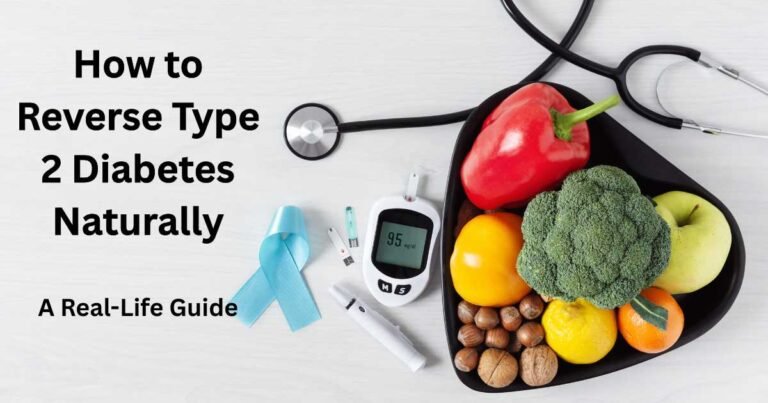Diabetes Tests Explained: Know Your Numbers Early

Diabetes affects millions worldwide and is often called a “silent” condition because it can develop without noticeable symptoms. Catching it early is crucial to prevent serious problems like heart disease, kidney issues, vision loss, and nerve damage.
Knowing the key diabetes tests and your numbers can help you stay ahead and manage your health better. This guide breaks down the four main diabetes tests, explains how they work, and what your results mean.
Why Regular Diabetes Testing Can Save Your Health
Diabetes doesn’t usually appear overnight. Prediabetes is a condition where your blood sugar is above the healthy range, but not high enough to be classified as type 2 diabetes. It’s like a warning sign that your body’s sugar control system needs attention. This phase offers a valuable chance to make changes and prevent diabetes altogether.
You should consider getting tested regularly if you:
- Are 45 years or older
- Are overweight or obese
- Have a family history of diabetes
- Have high blood pressure or cholesterol
- Live a sedentary lifestyle
- Had gestational diabetes during pregnancy
Getting tested early can help catch problems before they become serious health issues.
Understanding the Four Key Diabetes Tests
1. A1C Test: Your Blood Sugar’s 2-3 Month Average
The A1C test shows how much glucose has been sticking to your red blood cells, offering a picture of your average blood sugar levels over the last two to three months. It’s a quick test—there’s no need to fast—and is often the first step doctors use to check for diabetes.
How to read your results:
- Below 5.7%: Normal
- 5.7% to 6.4%: Prediabetes (higher risk)
- 6.5% or above: Diabetes
2. Fasting Blood Sugar Test: Your Baseline Blood Sugar Level
This test measures your blood sugar after not eating or drinking anything but water for at least 8 hours. Usually done first thing in the morning, it shows how your body manages sugar when you haven’t eaten.
Result guide:
- 70–100 mg/dL: Normal
- 100–125 mg/dL: Prediabetes
- 126 mg/dL or higher: Diabetes
3. Random Blood Sugar Test: Check Your Sugar Anytime
No fasting needed here. This test measures your blood sugar at any time of day, regardless of when you last ate. It’s useful if you need quick screening or can’t fast.
Interpreting results:
- Below 200 mg/dL: Usually normal
- 200 mg/dL or higher: Could indicate diabetes, especially if you have symptoms like thirst, frequent urination, or weight loss.
4. Glucose Tolerance Test: How Your Body Handles Sugar
After fasting overnight, you drink a sweet glucose solution. Over the next two hours, your blood sugar is tested to see how well your body processes sugar.
Results after 2 hours:
- Less than 140 mg/dL: Normal
- 140 to 199 mg/dL: Prediabetes
- 200 mg/dL or higher: Diabetes
This test is often used during pregnancy to detect gestational diabetes.
Quick Overview: Diabetes Tests at a Glance
| Test Name | What It Measures | Normal Range | Prediabetes Range | Diabetes Range | Preparation |
|---|---|---|---|---|---|
| A1C Test | Average sugar over 2–3 months | Below 5.7% | 5.7% – 6.4% | 6.5% or higher | No fasting required |
| Fasting Blood Sugar | Sugar level after 8 hours without eating | 70 – 100 mg/dL | 100 – 125 mg/dL | 126 mg/dL or higher | Do not eat or drink for 8 hours before |
| Random Blood Sugar | Sugar level at any time of day | Below 200 mg/dL | Not applicable | 200 mg/dL or higher | No special preparation needed |
| Glucose Tolerance Test | Sugar level after drinking glucose solution | Below 140 mg/dL | 140 – 199 mg/dL | 200 mg/dL or higher | Fast 8 hours, then drink glucose drink |
Preparing for Your Diabetes Test: What You Need to Know
- For fasting tests (Fasting Blood Sugar and glucose Tolerance), don’t eat or drink anything except water for at least 8 hours before the test.
- Schedule your test in the morning for convenience.
- Before any test, let your doctor know about all medications or supplements you’re using, as they can affect results.
- If you notice symptoms like unusual thirst, frequent urination, fatigue, or blurry vision, mention them during your visit.
What To Do If Your Results Aren’t Normal
If your results show prediabetes, it’s a wake-up call to make healthy lifestyle changes like:
- Eating a balanced diet low in sugars and refined carbs
- Staying active is key—try to get at least 30 minutes of exercise most days to help control blood sugar and support overall health.
- Maintaining a healthy weight
- Managing stress through relaxation or counseling
If diagnosed with diabetes, your healthcare team will help you manage it through medications, insulin if needed, lifestyle changes, and regular monitoring to avoid complications.
Frequently Asked Questions (FAQs)
Q: Can I do diabetes tests at home?
A: You can check your blood sugar randomly at home using glucometers, but tests like A1C and glucose tolerance require a lab visit.
Q: How often should I get tested?
A: If you have risk factors, yearly or twice yearly is good. Otherwise, adults over 45 should test every 3 years.
Q: Can I eat before an A1C test?
A: Yes, no fasting is needed for the A1C test.
Q: What’s the difference between prediabetes and diabetes?
A: Prediabetes means your blood sugar is higher than usual but not high enough to be diabetes. It’s a warning sign.
Q: What complications does diabetes cause?
A: It can lead to heart problems, kidney disease, vision loss, nerve damage, and infections if not managed.
Q: Is gestational diabetes dangerous?
A: It must be managed carefully to protect both mother and baby during pregnancy.
Final Thoughts: Take Charge of Your Health Today
Diabetes can be controlled and managed well if detected early. Knowing your numbers and understanding what they mean empowers you to make wise decisions for your well-being.
If you have any symptoms or risk factors, don’t wait — talk to your healthcare provider about testing. Combine regular testing with healthy habits to keep your blood sugar in check and live a vibrant life.






